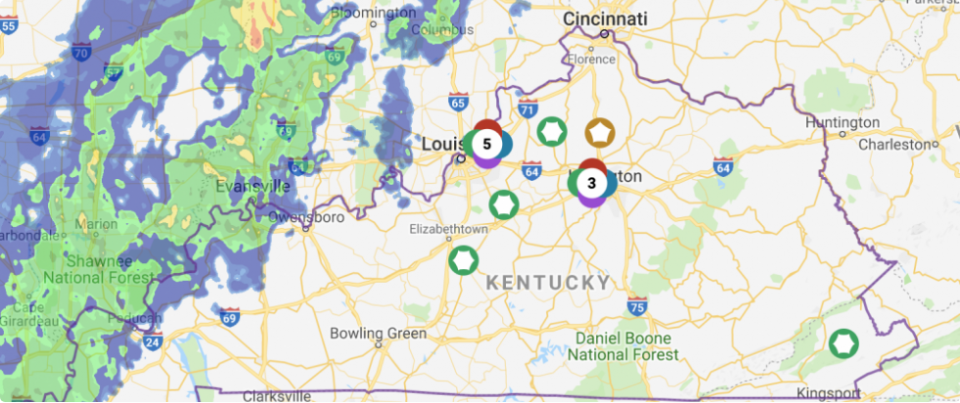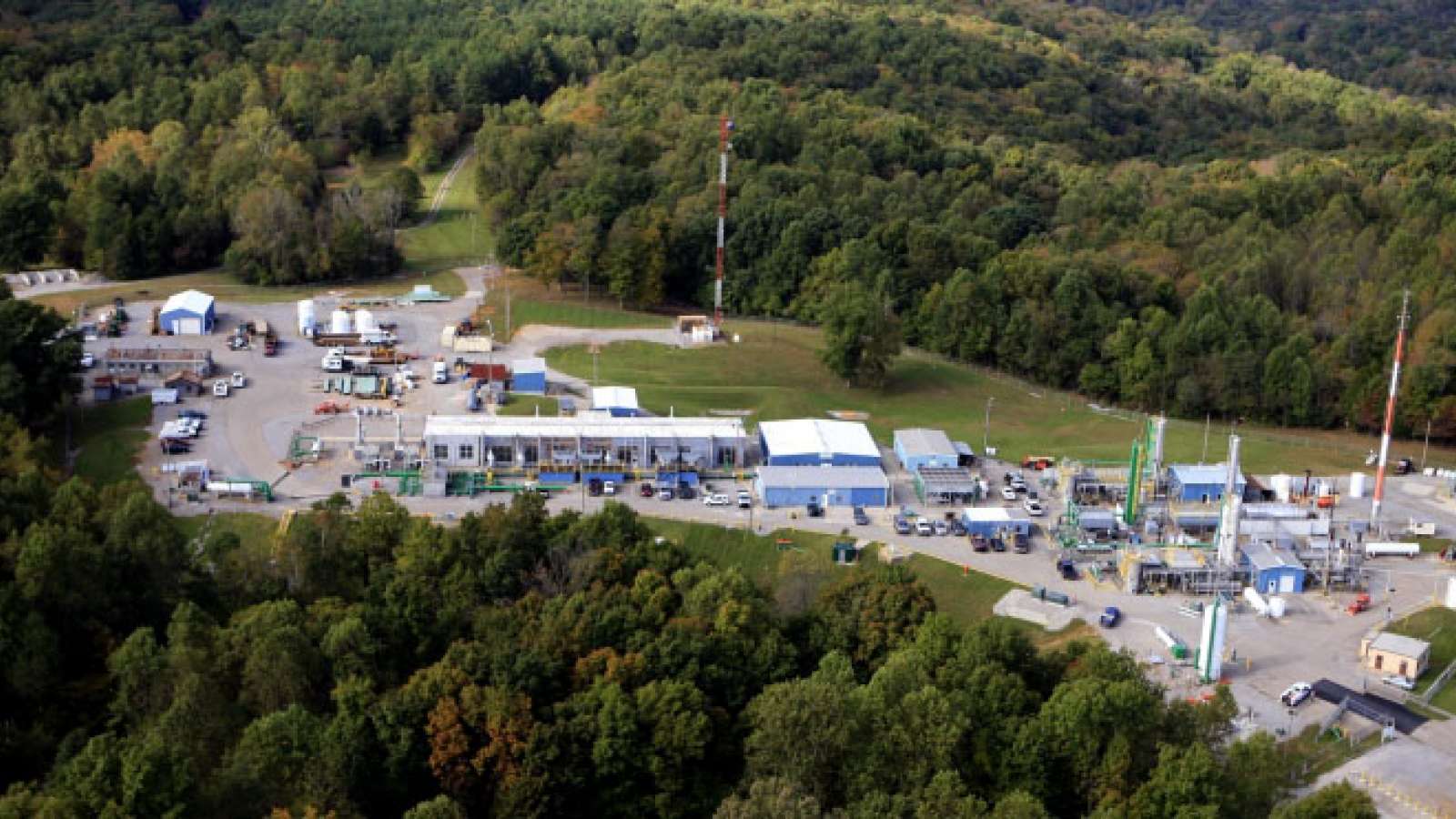LG&E's natural gas system serves more than 335,000 customers in 16 counties in Kentucky with more than 4,460 miles of distribution and nearly 360 miles of transmission lines. The company has two natural gas compressor stations and four natural gas storage fields. A gas storage field is a deep underground formation and is commonly a depleted oil and/or natural gas production field from years ago, deep aquifers, or salt cavern formations. LG&E uses underground formations to store natural gas until it is needed by customers. The stored gas is withdrawn and used to serve customers during the winter season, which reduces the amount of gas that must be purchased during the colder months when gas is typically at a premium. On a peak day, up to 42% of customers’ gas supply is met from the gas storage system. When natural gas is withdrawn from the storage field, compressor stations filter, meter, purify, dehydrate, compress, and odorize the natural gas before distribution. LG&E also has over 200 natural gas wells, most of which facilitate the injection and removal of gas, while others are for field observation.
The Muldraugh Compressor Station is located on approximately 13 acres in Meade County, Kentucky and processes and transports natural gas from the Muldraugh Gas Storage Field for distribution to natural gas customers. Muldraugh handles 23% of the total gas stored in LG&E’s gas storage system.
The original compressors that served the Muldraugh field were located on the Ohio River at the mouth of Otter Creek, and the original purification plant was located at the mouth of the Salt River. Both are now located atop the Muldraugh Gas Storage Field, which started out as a single shale gas compressor installation in 1930 with the sole purpose of capturing natural gas that escaped from the main storage formation. Following the record flood of the Ohio River in 1937, the entire compressor station was moved to the Muldraugh site. The entire station has undergone extensive renovations and upgrades, and to date none of the original equipment remains.
Doe Run Storage Field Closure
LG&E’s Doe Run Storage Field was developed in 1946 and was the first successful aquifer natural gas storage field in the U.S. Part of the Muldraugh facility, the Doe Run Storage Field was a deep aquifer consisting of a porous limestone rock formation (450 to 600 feet underground). Doe Run, was the first successful aquifer natural storage field in the U.S. It encompassed parts of Meade County, Kentucky and Harrison County, Indiana. While Doe Run had safely and reliably served customers across LG&E’s natural gas system for more than 75 years, the field required significant investments to continue to be cost-effective. As a result, LG&E closed the Doe Run Storage Field in 2024. This closure project included reducing the volume of natural gas in the storage field, plugging the 106 wells, and discontinuing the use of 35 miles of pipeline.
Throughout its history, LG&E has permanently closed five storage fields within its territory for various operational or economic reasons. The company currently has four active storage fields in the system.


